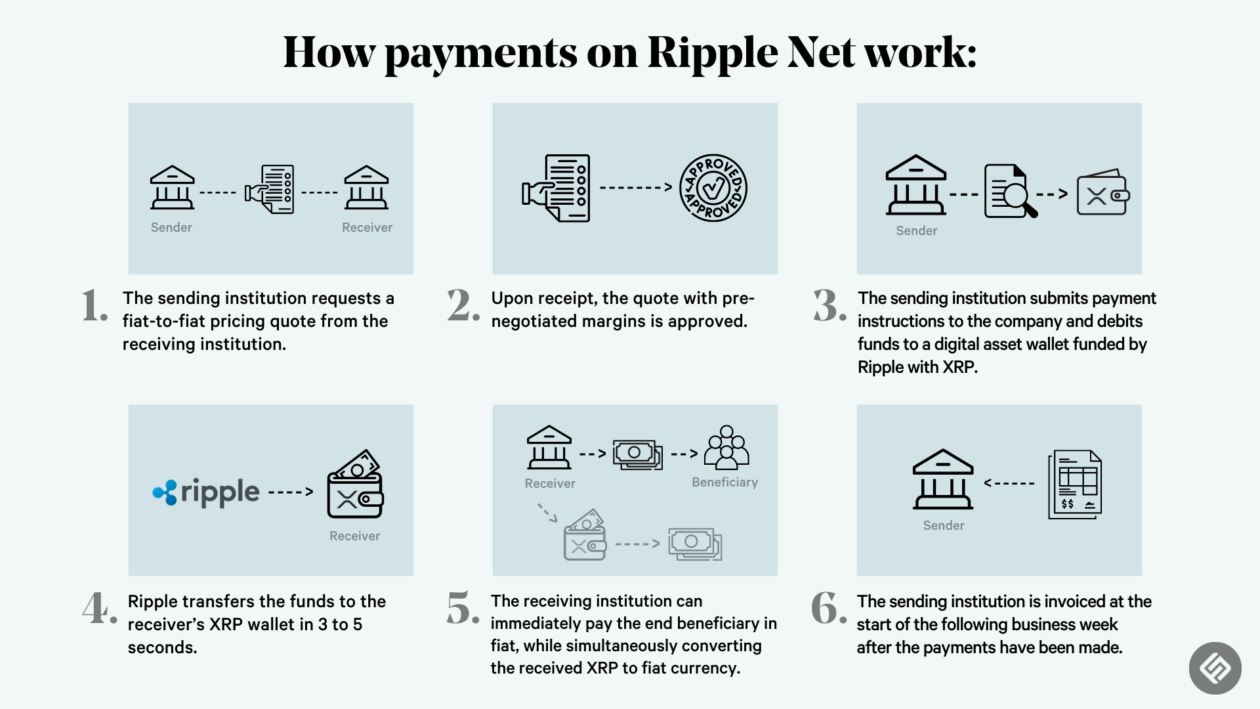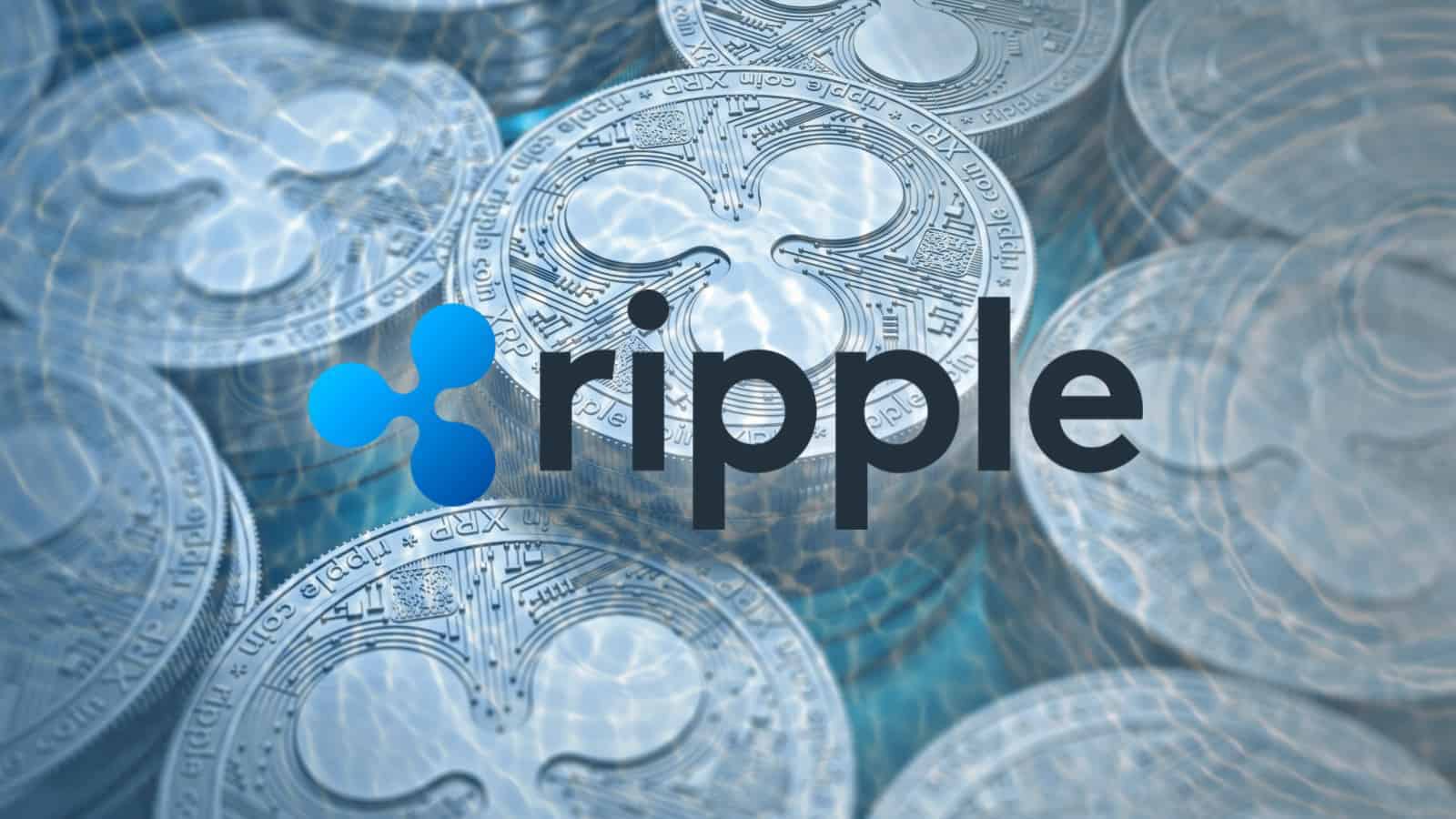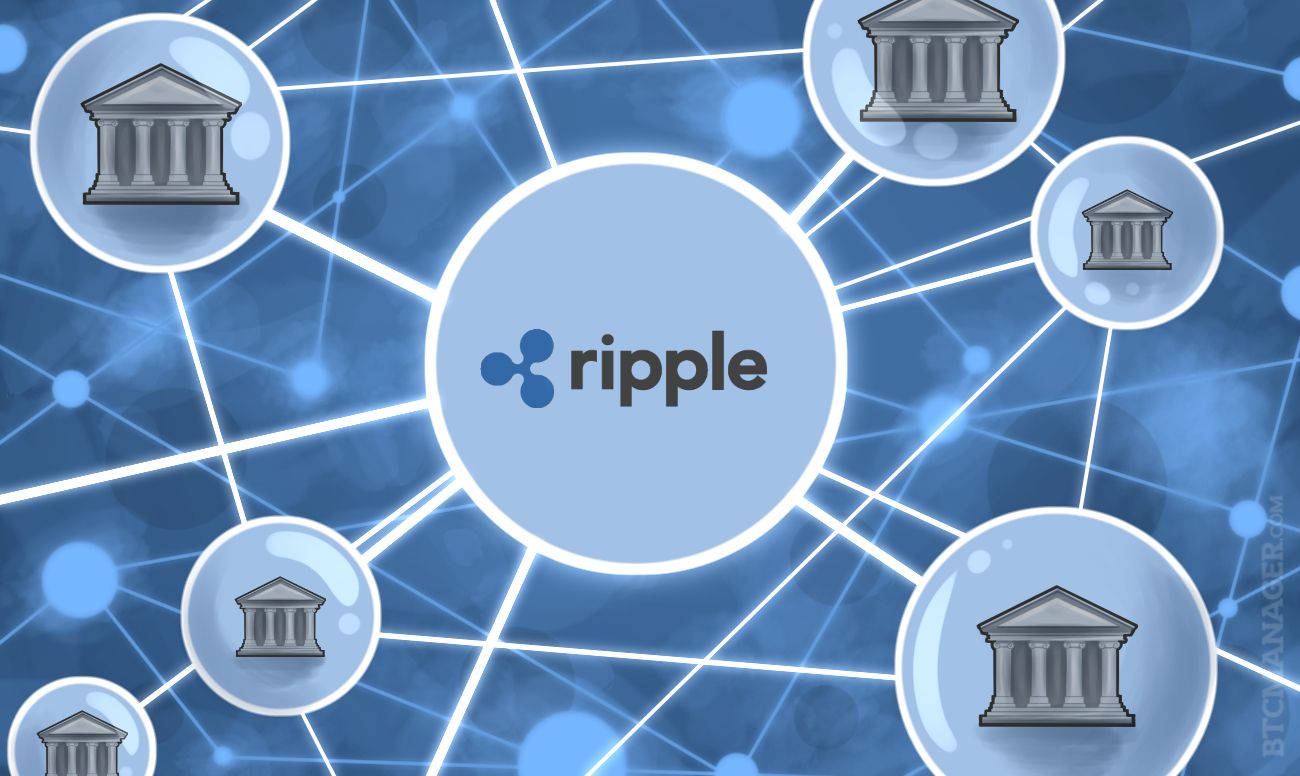Ripple XRP

Ripple XRP is a digital asset and a global payment network that facilitates fast, efficient, and cost-effective cross-border transactions. The network is built on a distributed ledger technology (DLT) known as the XRP Ledger, which operates independently of the traditional financial system.
Ripple Network and XRP Ledger, Ripple xrp
The Ripple network and XRP Ledger are interconnected components that work together to enable seamless cross-border payments. The Ripple network is a global network of financial institutions, payment providers, and other entities that use the XRP Ledger to settle transactions. The XRP Ledger is a decentralized, open-source blockchain that serves as the backbone of the Ripple network. It is responsible for validating and recording transactions, ensuring their security and immutability.
XRP’s Role in Cross-Border Payments
XRP plays a crucial role in facilitating cross-border payments within the Ripple network. It acts as a bridge currency, enabling the conversion of one currency to another without the need for intermediaries or traditional banking systems. This process is facilitated through a unique mechanism called “bridging,” where XRP is used to convert one currency to another, and then back to the original currency.
“XRP is designed to be a fast, efficient, and cost-effective bridge currency for cross-border payments.”
Comparison with Other Blockchain Platforms
Compared to other blockchain platforms, XRP stands out for its speed, scalability, and energy efficiency. Its consensus mechanism, known as “federated consensus,” allows for faster transaction confirmation times than proof-of-work blockchains like Bitcoin. Additionally, XRP’s unique architecture enables it to handle a high volume of transactions per second, making it suitable for large-scale payments.
Unique Features of XRP
Speed
XRP transactions can be confirmed in a matter of seconds, significantly faster than traditional bank transfers or other blockchain platforms. This speed is attributed to XRP’s federated consensus mechanism, which relies on a network of trusted validators to confirm transactions.
Scalability
XRP’s scalability is another key advantage. Its architecture allows for high transaction throughput, capable of handling thousands of transactions per second. This makes it suitable for large-scale payments and financial applications.
Energy Efficiency
Unlike proof-of-work blockchains that require significant computational power and energy consumption, XRP’s federated consensus mechanism is energy-efficient. It consumes significantly less energy compared to other blockchain platforms, making it more environmentally friendly.
XRP’s Use Cases and Applications

XRP, the native cryptocurrency of the Ripple network, has emerged as a versatile and efficient digital asset with a wide range of applications across various industries. Its unique features, including speed, scalability, and low transaction fees, make it a compelling solution for addressing various challenges in the financial and technological landscapes.
Use Cases of XRP Across Industries
The versatility of XRP extends beyond its traditional role as a digital currency, making it applicable across different sectors. Here’s a table highlighting its use cases in various industries:
| Industry | Use Case | Description |
|---|---|---|
| Finance | Cross-border payments | XRP facilitates faster and cheaper international money transfers by connecting different financial institutions and currencies. |
| Remittance | Global money transfers | XRP enables individuals to send money to family and friends abroad with lower fees and faster processing times. |
| Supply Chain | Trade finance and logistics | XRP streamlines trade transactions by providing secure and transparent payment solutions, enhancing supply chain efficiency. |
| Gaming | In-game currency and microtransactions | XRP can be used as an in-game currency for microtransactions, offering players a secure and efficient way to make purchases. |
| Decentralized Finance (DeFi) | Lending and borrowing | XRP’s liquidity and speed make it suitable for DeFi applications, enabling users to lend and borrow digital assets efficiently. |
XRP’s Potential in Enabling Micropayments and Facilitating Global Trade
XRP’s low transaction fees and fast processing times make it ideal for facilitating micropayments, enabling small-value transactions for various applications such as:
- Content monetization: Creators can receive micropayments for their work, such as articles, videos, or music.
- Online subscriptions: Users can subscribe to services for small recurring payments, offering greater flexibility and affordability.
- Internet of Things (IoT) payments: Devices can make micropayments for services, such as data usage or access to resources.
XRP’s potential in facilitating global trade is significant. Its speed and efficiency can streamline cross-border transactions, reducing delays and costs associated with traditional methods. XRP’s ability to settle payments in multiple currencies makes it a valuable tool for international businesses, enabling them to:
- Simplify trade finance: XRP can facilitate faster and more efficient trade finance transactions, reducing risks and costs.
- Improve supply chain transparency: XRP can track goods and payments throughout the supply chain, providing greater visibility and security.
- Expand market access: XRP can enable businesses to access new markets and customers by simplifying cross-border payments.
Significant Milestones in the Adoption of XRP
The adoption of XRP has been marked by several key milestones, showcasing its growing influence in the financial and technological landscapes:
- 2011: Ripple Labs was founded and XRP was first introduced.
- 2013: XRP was first listed on major cryptocurrency exchanges.
- 2016: Ripple launched its xRapid product, enabling financial institutions to use XRP for cross-border payments.
- 2018: Ripple partnered with several major financial institutions, including MoneyGram and Santander, to use XRP for cross-border payments.
- 2020: Ripple continued to expand its network of partners and released its xCurrent product, a blockchain-based solution for interbank payments.
Prominent Companies and Institutions Utilizing XRP
XRP has gained significant traction among various companies and institutions, demonstrating its growing acceptance and utility:
- MoneyGram: A leading global money transfer company that uses XRP for cross-border payments.
- Santander: A major Spanish multinational financial institution that uses XRP for cross-border payments between Spain and the United Kingdom.
- American Express: A global financial services company that is exploring the use of XRP for cross-border payments.
- Coil: A company that uses XRP to power micropayments for online content creators.
- Flutterwave: A leading African payments company that uses XRP for cross-border payments.
The Ripple Ecosystem and Community

The Ripple ecosystem is a complex and dynamic network of individuals, organizations, and technologies that work together to facilitate cross-border payments and financial transactions using the XRP ledger. It encompasses Ripple Labs, the company behind the technology, the XRP cryptocurrency, and a diverse community of developers, investors, and businesses.
Key Players and Stakeholders
The Ripple ecosystem is comprised of various stakeholders, each playing a crucial role in its growth and development.
- Ripple Labs: As the creator of the XRP ledger and the XRP cryptocurrency, Ripple Labs plays a central role in the ecosystem. The company develops and maintains the technology, promotes its adoption, and advocates for its use cases. It also provides tools and resources for developers and businesses to integrate XRP into their systems.
- XRP Holders: Individuals and institutions who hold XRP, the native cryptocurrency of the Ripple network, are essential to the ecosystem’s functionality. XRP is used for transaction fees and liquidity within the network, making it a crucial component of its operation.
- Financial Institutions: Banks, payment providers, and other financial institutions are increasingly adopting Ripple’s technology to streamline cross-border payments. These institutions benefit from XRP’s speed, low cost, and security, making it an attractive alternative to traditional payment systems.
- Developers: A vibrant community of developers contributes to the Ripple ecosystem by building applications, tools, and services on top of the XRP ledger. This open-source development fosters innovation and expands the possibilities for using XRP in various applications.
- Regulators: Regulatory bodies play a significant role in shaping the future of Ripple and XRP. Regulatory clarity and guidance are crucial for the continued growth and adoption of the technology.
Ripple Labs’ Role in Developing and Promoting XRP
Ripple Labs is the driving force behind the XRP ledger and the XRP cryptocurrency. The company plays a multifaceted role in the ecosystem, encompassing the following key areas:
- Technology Development: Ripple Labs continuously invests in research and development to improve the XRP ledger’s performance, security, and scalability. The company releases regular updates and upgrades to enhance the platform’s functionality and address evolving market needs.
- Adoption and Promotion: Ripple Labs actively promotes the adoption of XRP and its underlying technology by engaging with financial institutions, businesses, and developers. The company collaborates with partners to build solutions that leverage the XRP ledger’s capabilities for various use cases.
- Advocacy and Education: Ripple Labs advocates for the use of XRP and the broader blockchain technology through public outreach, educational initiatives, and industry collaborations. The company aims to raise awareness about the potential of blockchain and its applications in finance and beyond.
Community Developers and Open-Source Contributions
The Ripple ecosystem thrives on the contributions of a passionate community of developers who actively participate in building and enhancing the XRP ledger. Open-source development plays a crucial role in fostering innovation and expanding the possibilities for using XRP.
- Open-Source Development: The XRP ledger is an open-source project, meaning that its code is publicly available for anyone to inspect, modify, and contribute to. This open-source nature allows developers to collaborate, identify potential issues, and propose improvements, fostering a culture of transparency and community involvement.
- Community-Driven Innovation: The open-source nature of the XRP ledger empowers developers to build innovative applications and tools on top of the platform. This community-driven innovation leads to the development of new use cases and expands the ecosystem’s reach.
- Decentralized Governance: While Ripple Labs plays a significant role in the ecosystem, the XRP ledger is designed to be decentralized. This means that the network’s governance is shared among its participants, fostering a more inclusive and democratic approach to decision-making.
The Regulatory Landscape Surrounding Ripple and XRP
The regulatory landscape surrounding Ripple and XRP is constantly evolving, with various jurisdictions taking different approaches to the regulation of cryptocurrencies and blockchain technology.
- Regulatory Uncertainty: The lack of clear and consistent regulatory frameworks for cryptocurrencies in many jurisdictions creates uncertainty for businesses and investors. This uncertainty can hinder the adoption of XRP and other cryptocurrencies, as businesses may be hesitant to invest in technologies with unclear regulatory status.
- Regulatory Scrutiny: Ripple Labs and XRP have faced regulatory scrutiny in various jurisdictions, particularly in the United States. The Securities and Exchange Commission (SEC) has investigated Ripple Labs’ sale of XRP, raising questions about its classification as a security.
- Regulatory Compliance: Ripple Labs emphasizes its commitment to regulatory compliance and is actively working with regulators to ensure its operations adhere to relevant rules and regulations. The company believes that regulatory clarity will ultimately benefit the broader crypto industry, fostering greater confidence and adoption.
Ripple XRP has emerged as a significant player in the cryptocurrency landscape, aiming to revolutionize cross-border payments. The Ripple network, powered by XRP, leverages blockchain technology to facilitate fast, cost-effective transactions. To delve deeper into the workings of Ripple XRP and its potential, you can explore this comprehensive guide: ripple xrp.
Ripple XRP’s focus on financial efficiency and its growing adoption within the financial sector make it a compelling force in the world of digital currencies.
Ripple XRP, a digital asset with a focus on global payments, often sparks discussions about its potential. Similar to how parents seek solutions for safe and convenient mealtimes, finding the right tools for success is crucial. A baby eating chair attached to table provides stability and security, just as Ripple XRP aims to bring stability and efficiency to the world of finance.
